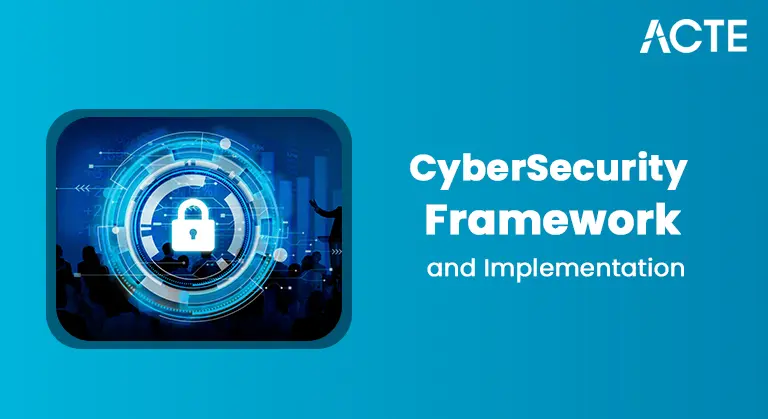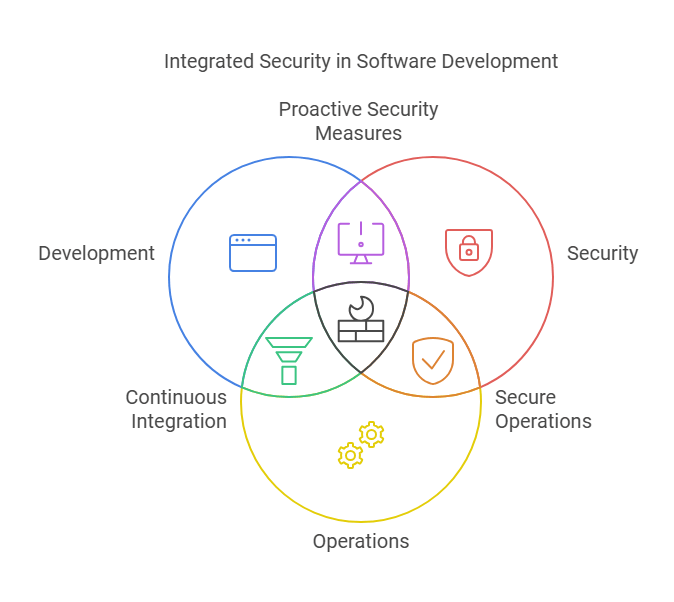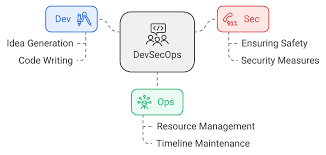
- Introduction
- Key Principles of DevSecOps
- Snyk for Vulnerability Management
- Aqua Security for Container Protection
- SonarQube for Code Quality and Security
- OWASP ZAP for Web Application Security
- Jenkins and CI/CD Security Integration
- Conclusion
DevSecOps integrates security into DevOps, ensuring secure software development by embedding security at every stage. Key principles include automation, continuous monitoring, and collaboration between development, security, and operations teams. Tools like Snyk help in vulnerability management by identifying and fixing security issues in dependencies. Aqua Security protects containers by securing runtime environments and scanning images for vulnerabilities. SonarQube enhances code quality and security, ensuring compliance with coding standards. OWASP ZAP detects web application vulnerabilities, safeguarding against common security threats, both of which are essential topics covered in Devops Courses to help students understand and implement best practices for secure and efficient cloud applications. Jenkins ensures CI/CD security integration by automating security checks in the development pipeline. These tools streamline security processes without slowing down development speed. By embedding security early, DevSecOps minimizes risks, enhances compliance, and strengthens overall security posture. Organizations adopting DevSecOps achieve faster, more secure deployments while maintaining regulatory requirements. The approach fosters a proactive security culture, reducing vulnerabilities before they impact production. Implementing the right tools and best practices is crucial for an effective DevSecOps strategy.
To Explore Devops in Depth, Check Out Our Comprehensive Devops Training To Gain Insights From Our Experts!
Introduction
DevSecOps, short for Development, Security, and Operations, integrates security into every phase of the software development lifecycle. Unlike traditional methods where security is an afterthought, DevSecOps proactively identifies and mitigates risks early. In fast-paced environments with continuous integration and delivery, this approach ensures security without disrupting workflows. By embedding security from the start, vulnerabilities are addressed before they become critical issues. Automation, continuous monitoring, and collaboration are key principles driving DevSecOps adoption, which is crucial when working with services like AWS VPC to ensure secure network configurations and the protection of cloud resources. It enhances product security while maintaining development speed and agility. Security tools and practices are seamlessly integrated into pipelines. This reduces compliance risks and strengthens overall cybersecurity. Organizations benefit from faster, more secure software deployments. DevSecOps fosters a culture of shared responsibility among development, security, and operations teams.
Key Principles of DevSecOps
- Security as Code: Security practices should be codified to ensure consistency, scalability, and repeatability across development and deployment processes. This involves writing scripts and infrastructure-as-code (IaC) policies to enforce security compliance automatically. Examples include defining security baselines for cloud infrastructure, automating configuration management with tools like Ansible or Terraform, and incorporating security policies into version control. By treating security as code, organizations can standardize security implementations, reduce human errors, and quickly adapt to new threats by updating security scripts instead of relying on manual interventions.
- Automation: Automating security tasks helps reduce manual effort, improve efficiency, and ensure security controls are consistently applied across applications and infrastructure. Vulnerability scanning tools like Snyk and Qualys can automatically identify security issues in dependencies and containers. Static and dynamic code analysis using tools like SonarQube and OWASP ZAP ensures that security vulnerabilities are detected early, a practice that is important when comparing Containers Vs Virtual Machines, as both require different approaches to security and vulnerability management in cloud environments. Automated penetration testing and compliance checks help organizations maintain security without delaying development timelines.
- Continuous Monitoring and Feedback: Real-time monitoring of systems, applications, and networks ensures that security threats and vulnerabilities are detected promptly. Security information and event management (SIEM) tools like Splunk, ELK Stack, and AWS GuardDuty collect and analyze logs for suspicious activities. Intrusion detection systems (IDS) and runtime protection solutions provide alerts on potential security breaches, enabling rapid response. Continuous feedback loops ensure that security teams, developers, and operations staff are aware of emerging risks, allowing them to take corrective actions before threats escalate.

- Collaboration: DevSecOps promotes collaboration between developers, operations, and security teams to ensure security is embedded in every stage of the software development lifecycle. Effective communication and shared responsibility for security help prevent security from becoming a bottleneck. By integrating security into agile workflows and conducting regular security training, teams become more aware of risks and best practices. Security champions within development teams can advocate for secure coding practices, ensuring that security is a proactive effort rather than a last-minute addition.
- Integration into CI/CD Pipelines: Security must be integrated into the CI/CD pipeline to detect and mitigate vulnerabilities during development and deployment. This involves adding security scanning tools as part of automated build and deployment processes. Static Application Security Testing (SAST) tools analyze source code for vulnerabilities, while Dynamic Application Security Testing (DAST) tools test running applications. Secrets management solutions, such as HashiCorp Vault, ensure sensitive credentials are not exposed. By embedding security checks at every stage, organizations can release secure software quickly and efficiently without compromising on security.
- Runtime Security: Runtime security in Aqua Security provides continuous monitoring of running containers to detect and prevent security threats in real-time. It identifies suspicious activities such as unauthorized access, privilege escalation, and abnormal behavior in containerized applications. By enforcing security policies and restricting unauthorized changes, Aqua Security ensures that vulnerabilities are not exploited during runtime. It also offers automated threat detection and response mechanisms to mitigate risks without manual intervention.
- Image Scanning: Aqua Security performs deep scanning of container images before deployment to identify vulnerabilities, misconfigurations, and malware. It checks for outdated dependencies, weak security settings, and known exploits in containerized applications, which is an important topic covered in Devops Courses to help students understand container security and best practices for managing secure cloud environments. Integrating with CI/CD pipelines enables developers to fix security issues early in the software development lifecycle.
- Network Segmentation: Aqua Security enforces strict network segmentation to control communication between containers and prevent lateral movement of threats. It ensures that only authorized services can communicate with each other, reducing the attack surface in a containerized environment. By implementing micro-segmentation and network policies, it prevents attackers from gaining access to sensitive workloads. This approach strengthens container security by isolating compromised containers and limiting the spread of security breaches.
- Secrets Management: Aqua Security provides a secure and centralized way to manage sensitive information such as API keys, authentication tokens, and passwords. It prevents unauthorized access by ensuring that secrets are encrypted and only accessible to authorized containers and services. Integrating with external secret management solutions like HashiCorp Vault and AWS Secrets Manager enhances security for cloud-native applications. Proper secrets management reduces the risk of credential leaks and unauthorized access to critical resources.
- Compliance and Governance: Aqua Security helps organizations achieve regulatory compliance by automating compliance checks for standards like PCI-DSS, GDPR, NIST, and HIPAA. It continuously monitors containerized applications for policy violations and security misconfigurations. With built-in reporting and auditing capabilities, organizations can track security posture and enforce governance policies. Ensuring compliance not only reduces legal and financial risks but also enhances trust in containerized applications and cloud-native environments.
- Automated Security Scanning: OWASP ZAP offers automated security scanning to detect vulnerabilities in web applications, ensuring proactive threat detection. It helps identify security issues such as SQL injection, cross-site scripting (XSS), broken authentication, and security misconfigurations. Automated scanning reduces manual effort, accelerates security assessments, and helps maintain a secure application environment by detecting risks before deployment.
- Active and Passive Scanning: OWASP ZAP employs both active and passive scanning techniques to ensure comprehensive security testing. Active scanning aggressively probes applications for security weaknesses by injecting attack payloads and analyzing responses. Passive scanning, on the other hand, monitors traffic silently without modifying requests, helping identify potential vulnerabilities without disrupting normal application operations. This dual approach ensures in-depth security assessments while minimizing system impact.
- Intercepting Proxy: OWASP ZAP functions as an intercepting proxy, sitting between the browser and the web application, allowing security professionals to inspect, modify, and analyze HTTP/S requests and responses. This feature is crucial for manual security testing, enabling testers to manipulate application traffic, identify security flaws, and assess the impact of different attack vectors, which is also important when considering solutions like Azure Data Box Secure Data Transfer Solution, where secure data handling and vulnerability assessments are key for safeguarding sensitive information during transfer. It provides a hands-on approach to identifying vulnerabilities that automated scanning might miss.
- Integration with DevSecOps: OWASP ZAP seamlessly integrates with CI/CD pipelines and DevSecOps workflows, enabling continuous security testing at every stage of development. By incorporating OWASP ZAP into automated build and deployment processes, teams can detect vulnerabilities early and fix them before they reach production. This integration supports shift-left security practices, where security assessments are performed during development rather than after deployment.
- Extensive Reporting and Alerts: OWASP ZAP provides detailed reports on discovered vulnerabilities, categorizing them based on severity levels and suggesting remediation steps. It offers real-time alerts and dashboards to help developers and security teams prioritize security risks efficiently. These reports include recommendations for fixing identified issues, and ensuring developers can address vulnerabilities quickly and effectively. Comprehensive reporting enhances security visibility and facilitates compliance with industry standards and regulations.
Interested in Obtaining Your Devops Certificate? View The Devops Training Offered By ACTE Right Now!
Snyk for Vulnerability Management
Snyk is a developer-friendly security tool that identifies and remediates vulnerabilities in open-source dependencies, container images, and infrastructure as code. It scans dependencies for known security risks and provides actionable recommendations to fix issues. With seamless integration into popular development tools like GitHub, Jenkins, and Bitbucket, Snyk enhances security without disrupting workflows. Its regularly updated vulnerability database ensures up-to-date threat detection. By automating security checks, Snyk helps developers secure applications efficiently. It also supports compliance with industry security standards, reducing risks from third-party libraries. Snyk’s proactive approach minimizes potential threats early in the development cycle. It fosters a security-first mindset among developers. Organizations benefit from improved application security and reduced exposure to vulnerabilities. Implementing Snyk strengthens the overall software security posture.
Aqua Security for Container Protection
SonarQube for Code Quality and Security
SonarQube is an open-source platform that enhances code quality and security by analyzing source code for bugs, vulnerabilities, and code smells. It supports static code analysis across multiple languages and integrates with CI/CD tools like Jenkins and GitLab, which is vital in understanding the Applications of Cloud Computing, where automated development workflows and continuous integration play a crucial role in scalable and efficient cloud-based applications. With customizable quality gates, it enforces coding standards and provides detailed vulnerability reports.

SonarQube helps teams address security issues at the code level, reducing risks and improving software quality. Its proactive approach ensures security is embedded in development. Automated analysis detects potential flaws early in the cycle. Offering remediation steps, aids in continuous improvement. The platform supports regulatory compliance and secure coding practices. Developers gain real-time feedback to enhance code efficiency. SonarQube ultimately fosters a secure and high-performing development environment.
Are You Considering Pursuing a Master’s Degree in Devops? Enroll in the Devops Masters Training Course Today!
OWASP ZAP for Web Application Security
Jenkins and CI/CD Security Integration
Jenkins, a widely used automation server, streamlines building, testing, and deploying applications while integrating security into CI/CD pipelines. Embedding security checks ensures vulnerabilities are detected early in the development lifecycle. Tools like Snyk, SonarQube, and OWASP ZAP can be added as build steps to scan code, dependencies, and container images. Automated security testing helps identify flaws before deployment, reducing risks. Security gates can block releases if critical vulnerabilities are found, preventing insecure applications from reaching production, which is an important consideration when using Microsoft Azure Analysis Services to ensure secure and compliant data processing and analysis in the cloud. This proactive approach aligns with DevSecOps principles, ensuring faster and safer software delivery. By integrating security, teams can address issues before they escalate, minimizing potential threats. Continuous monitoring enhances compliance and risk management, strengthening overall security posture. Jenkins supports security automation without slowing down development, enabling secure and efficient software delivery. Security-focused CI/CD pipelines improve software quality and resilience. Organizations adopting this approach benefit from reduced security incidents and stronger application defenses.
Are You Preparing for Devops Jobs? Check Out ACTE’s Devops Interview Questions & Answer to Boost Your Preparation!
Conclusion
DevSecOps is essential for modern software development, embedding security as a core component rather than an afterthought. Tools like Snyk, Aqua Security, and SonarQube help identify and mitigate risks throughout the development lifecycle. Integrating security into CI/CD pipelines with Jenkins ensures continuous protection without slowing down development. Automation and proactive monitoring strengthen security while maintaining agility and speed. By shifting security left, teams detect vulnerabilities early, reducing risks and compliance issues, which are key concepts explored in Devops Courses to help students integrate security practices seamlessly into cloud development and operations. DevSecOps fosters collaboration between development, security, and operations teams for seamless implementation. Continuous monitoring and real-time threat detection enhance overall security posture. As cyber threats evolve, organizations must adopt DevSecOps to stay resilient. Implementing robust security tools and best practices ensures secure, high-quality software. A strong DevSecOps strategy leads to faster, safer, and more efficient software delivery.





